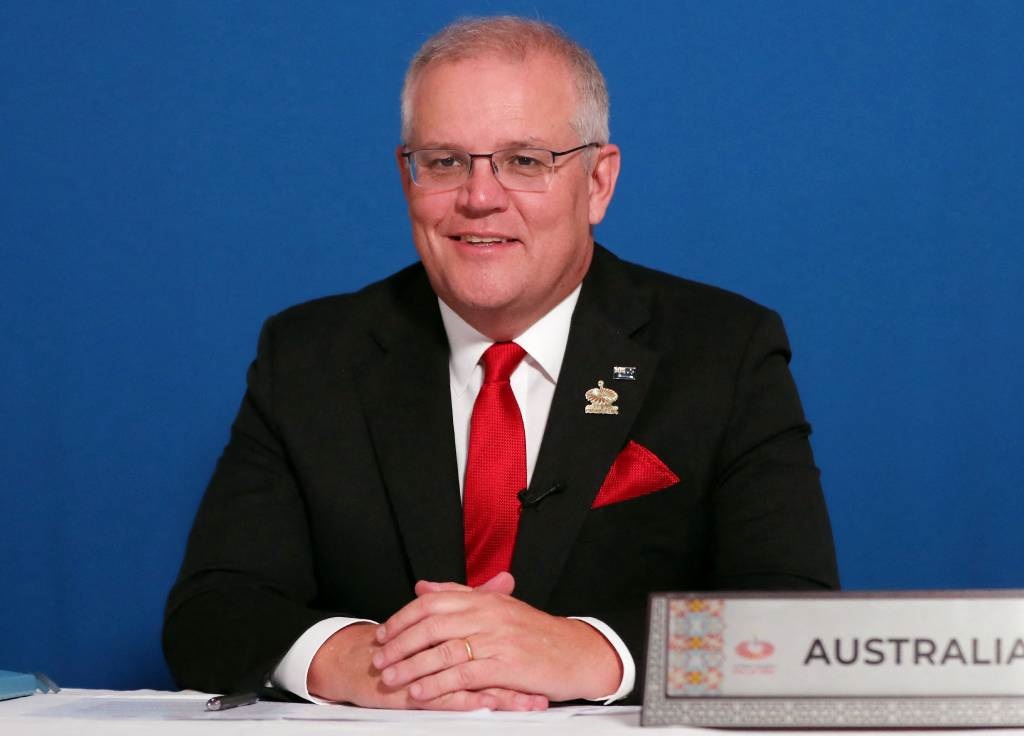- Created in 2008, the Amazon Fund supports rainforest conservation projects with donations from Germany and Norway but was paralyzed during former President Jair Bolsonaro’s administration.
- With Luiz Inácio Lula da Silva taking office early this year, the fund was resumed and should get new donations from the U.K. and the United States.
- In the first meeting in four years, the steering committee decided to prioritize 14 approved projects when Bolsonaro froze the fund.
- According to the Brazilian Development Bank, the Amazon Fund has already accumulated $1.1 billion and has about $620 million to spend on new projects to be submitted and approved.
When former President Jair Bolsonaro’s government froze the Amazon Fund in June 2019, the Frutificar Amazônia project was suddenly halted. Proposed by the Amazon Environmental Research Institute (IPAM) in partnership with eight other organizations, the program aimed to develop the cocoa and açaí businesses in the Brazilian states of Pará and Amapá. It would improve production techniques, create new management areas, recover degraded forests, build agro-industries, develop products and boost commercialization.
The proposal had the approval of the Brazilian Development Bank (BNDES), the fund manager. However, there was no transfer of resources after the shutdown, affecting the sustainable development initiatives for 900 families. No money, no project.
“It was very frustrating,” Lucimar Souza, deputy director of territorial development at IPAM, told Mongabay by phone. “The political decision to block new Amazon Fund projects demobilized a proposal built with great effort; a dream for these families.”
An agroecology project created by the Institute for Ecological Research (IPÊ) with eight partners in the Brazilian Amazon experienced the same. The sustainable development proposal for 1,800 families in a mosaic of protected areas in the lower Negro River, near Manaus, the capital of Amazonas state, awaited the first deposit when the Amazon Fund was frozen. The project has been on hold for four years.
“The impact was huge because everyone was waiting for the money to start the work,” Fabiana Prado, manager of the Integrated Legacy of the Amazon Region, an IPÊ initiative, told Mongabay by phone. “Unfortunately, the problem has discouraged the organizations operating in these territories,” she said.

The fund was created in 2008 to receive money from international donors to help conserve the Amazon. Since then, it has funded 102 projects with $360 million in donations, mostly from countries like Norway and Germany. In 2019, it was shut down by former President Jair Bolsonaro’s administration, which opposed the fund from an ideological standpoint. Bolsonaro and his allies believe in conspiracy theories that frame international donors and NGOs as threats to Brazilian sovereignty — for experts, a “smokescreen” to hide the dismantling of the Amazon protections.
Bolsonaro lost his reelection bid in 2022, and incoming President Luiz Inácio Lula da Silva restarted the fund on his first day in office.
Now, the IPAM and IPÊ initiatives are among the 14 projects with priority for approval, as decided Feb. 15 by the Amazon Fund Steering Committee in the same meeting that revalidated operating guidelines to put the fund back into operation.
“There’s a green light for these 14 projects,” Nabil Kadri, head of the environment department at BNDES, responsible for managing the Amazon Fund, told Mongabay. “All the authors have already expressed interest in revalidating the proposals, which will have updated scope and budget because of the years of waiting.”
Six projects were chosen in a public call to consolidate and strengthen sustainable and inclusive value chains in 2018 and will continue now. Besides the two proposals mentioned above, the list of priorities also includes a project for the production of guaraná and coffee in Amazonas, a plan to strengthen the babaçu business in Maranhão, an initiative to boost the Brazil nut chain in Mato Grosso, and a program to develop cooperatives and associations linked to Amazon’s products.
At Mongabay’s request, BNDES listed the other eight priority projects without identifying the authors or detailing the nature of the proposals. The Rondônia government confirmed the authorship of a project to recover degraded areas in the state. The Acre state has proposed a zero-deforestation project, with actions to promote environmental development and combat crime.
The fund will also back an initiative in an Indigenous land of the Juruá River in Amazonas, projects from private associations based in Manaus and Salvador, a program covering municipalities from four states of the Legal Amazon, and two other third-sector actions with a national scope.

The projects supported by the Amazon Fund are essential to generate income for Amazonian communities from products that inhibit deforestation, according to Adriana Ramos, a political and socio-environmental rights adviser at the Socioambiental Institute (ISA). “These projects heat up the local economy with the standing forest,” Ramos told Mongabay by phone. “It’s a strategy that reinforces the presence of these communities in the territory, helping to protect the Brazilian Amazon from invasions and other illegal activities.”
Prado, from IPÊ, said that work with the partner organizations has already restarted. “We are happy with the resumption because there was not much hope. The impact was significant. We will have to pick up where we left off. Nothing has happened in four years, so it will be necessary to mobilize some of those involved.”
Souza said that IPAM is working on the updates requested by BNDES to advance the project. “The expectation is that actions with producers will begin later this year.”
According to Kadri from BNDES, it is impossible to predict when the 14 projects will start, as this depends on the entities involved and the complexity of each proposal. However, he said the Amazon Fund team is recomposed and works without bottlenecks. The most recent Amazon Fund report, released in April, indicated another 42 proposals in the initial processing phase searching for approval.
New money
According to BNDES, the fund is sized at $1.1 billion — $660 million from direct donations, especially from Norway and Germany, and $440 million from earnings. The 14 projects being resumed will receive $120 million, with values updated by up to 30%. About $620 million is available for new proposals.
The amount may increase with the donations pledged by the United States and the United Kingdom. In April, President Joe Biden offered $500 million to the Amazon Fundbut it still needs approval from the U.S. Congress to confirm it. In May, British Prime Minister Rishi Sunak said the U.K. would contribute about $100 million.
Virgílio Viana, the Sustainable Amazon Foundation (FAS) general superintendent, said the current values are relevant. Still, according to him, more money and quality projects are decisive in protecting the Brazilian Amazon. “What we need is a change of trajectory in the development of the Amazon Rainforest, which requires more efforts, much more than simple speeches,” he told Mongabay by phone.

New demands
Besides validating the 14 proposals, the fund’s meeting listed three priorities for new projects. The first is to restore the rule of law in the Brazilian Amazon, curbing illegalities that accelerated deforestation. The second encourages studies and projects for territorial planning, especially in favor of undesignated public land. The third aims to support Indigenous and traditional peoples to be implemented quickly in emergencies.
The new design allows the federal government to present structuring proposals to reorganize its presence in the Amazon region after the dismantling of public policies during the Bolsonaro administration. However, until April, the fund managers had not received projects from ministries. “No proposal has passed through a first filter of adherence,” he said.
Mongabay questioned three federal government ministries about Amazon Fund projects. The Ministry of Justice and Public Security sent an email that said it’s preparing a proposal but did not offer details. In February, Minister Flávio Dino said he would use resources from the fund to protect frontiers and fight environmental crimes in the Legal Amazon’s states.
The Ministry of Environment and Climate Change has not confirmed a project. In May, Minister Marina Silva said she intended to allocate the UK donation to Indigenous protection projects. The Ministry of Indigenous Peoples has not said whether or not it has plans to formulate a proposal.
According to the experts, new command and control initiatives can curb deforestation. “We lost four years, and we went back four years,” Viana said. “Today, the scenario is one of enormous regression, with unprecedented links in the chains of organized crime.” But he warned that the deforestation agenda was more extensive. “It’s important to create solutions for economic development with the forest standing. And this is an area where the nonprofit sector has much more creativity and competence due to this more innovative profile.”
For Viana, only a systemic approach will be able to overcome the challenges and transform the reality of the Brazilian Amazon. “We cannot lose focus on the bioeconomy based on the native riches to take the population out of the poverty line. It’s a profound challenge to generate prosperity with the forest standing.”
Ramos, from ISA, said the fund needs to improve strategies so the supported projects have a longer life. “We have to advance in mechanisms that put resources in the hands of the communities because spending money in the Amazon territories is a way to empower the peoples of the region to act against illegalities,” she said.
Banner image: Brazilian President Lula met U.S. President Joe Biden in February. In April, Biden pledged $500 million to the Amazon Fund. Image courtesy of Ricardo Stuckert/PR/Agência Brasil.
FEEDBACK:Use this formto send a message to the author of this post. If you want to post a public comment, you can do that at the bottom of the page.
Note: This article have been indexed to our site. We do not claim legitimacy, ownership or copyright of any of the content above. To see the article at original source C lick Here












